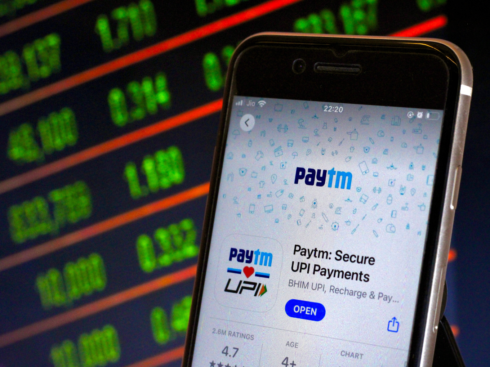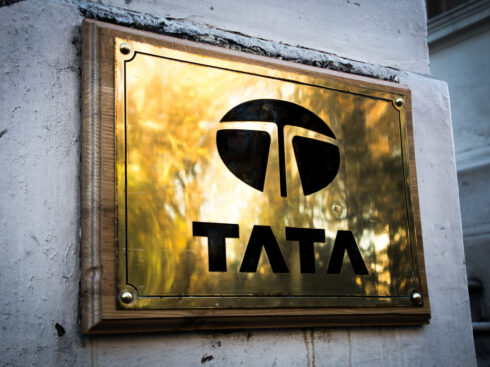
SUMMARY
In this article, we are going to cover how some of the fastest growing Indian startups have successfully leveraged growth hacking techniques.
This article is in continuation of two growth hacking article shared earlier. The first one shed light on some of the big misconceptions about Growth Hacking and the second one covered top 10 most effective growth hacking techniques.
In this article, we are going to cover how some of the fastest growing Indian startups have successfully leveraged growth hacking techniques:
Shopclues
About the company
Shopclues, an online marketplace owned by Clues Network Pvt. Ltd was established in July 2011 in Silicon Valley by Sanjay Sethi, Radhika Aggarwal, and Sandeep Aggarwal. The idea for Shopclues was born in California when Radhika and Sandeep Aggarwal, who was then with Caris & Company, met Sanjay Sethi, who was working for eBay. The three of them, with their families, moved from California to India to start Shopclues, a marketplace for the masses.
The company joined the unicorn club with a valuation of $1.1 Bn. It has Tiger Global, Helion Ventures and Nexus Venture Partners as its major investors.
Around 70% of its gross merchandising value (GMV) is received from tier-II and tier-III cities in India. Shopclues is now India’s first and largest managed marketplace with more than 10 crore monthly visitors on its website and a 70,000-plus seller base.
Growth Techniques
Shopclues deployed various growth hacks to pull more users to its platform and convert them into transacting customers. A few significant hacks were:
- personalised targeting of visitors via email
- personalised product recommendations on marketing channels
- continuous testing and optimisations on ad creatives
- identification of high lifetime value (LTV) customers via user path analysis
Most of these techniques started with simple ideas that came up in the conversations and evolved with quick experimentation. Once the impact was established via the A/B testing approach, a planned approach was deployed to scale these experiments rapidly.
Shopclues achieved its first success with personalised email targeting of visitors. These emails were user-specific, featuring products having the highest propensity of being liked and purchased by the users.
These emails were developed using the data generated by the past behaviour of the users as well as the behaviour of users with similar personas and platform interaction history. Various A/B tests were run to decide the best email content. The conversions from these emails were monitored and improved versions were continuously tested.
All these efforts translated into:
- A conversion jump of 20% with the transacting user base doubling over a six-month period.
- LTV of customers growing by 30% for the users after targeting via personalised mailers and notifications.
- Creation of a lot of in-house and management capabilities for Facebook. Shopclues has built creative automation technologies, which was a first for the market and helped the company see a 20–25% improvement in our click-through rates (CTRs) and a 20% improvement in customer acquisition cost (CAC).
- The best part of it all was that the team was able to customise this completely to their business. Shopclues also achieved a 30% improvement in Facebook ad conversions by altering ad creatives as per campaign-wise performances.
- Cost savings from improvements in CAC and CTR helped the team explore other mediums, thus helping it grow the user base by 25% in six months.
- A tremendous growth in LTV of users through its growth hacking measures. Personalized targeting of site visitors with emailers led to a doubling of the transacting visitors in six months.
Now, other companies have followed suit, and even Facebook is developing these features as a generic-use case for all advertisers.
Zomato
About the company
Founded in 2008 by Deepinder Goyal and Pankaj Chaddah, Zomato is a global restaurant discovery and food-ordering platform. It boasts of 12 crore visits and 5.3 crore active users monthly. In January 2018, investment bank Morgan Stanley has valued this home-grown food-tech unicorn at $2.5 Bn.
When Deepinder and Pankaj were at Bain, they noticed how their colleagues struggled to find the menus of restaurants around their office. They had to either go to the pantry area or ask friends for the menus so that they could order food or physically head to a joint. This need triggered the idea for Zomato.
The platform began as Foodiebay.com and in November 2010 was renamed Zomato. The company decided to keep the idea of food at the centre of the business and choose a name that was short, easy to remember and made people think of food. The name ‘Zomato’ has got a zing to it and is a play on the word ‘tomato’.
Zomato currently operates in over 10,000 cities across twenty-four countries, including Australia and the United States. Their core content features include restaurant information such as scanned menus and photos sourced by its massive feet-on-the-street team across cities it is present in globally. Users can rate and review restaurants and also create their own personal network of foodies for trusted recommendations.
Growth Techniques
Zomato has always been a very limited-cost marketing player. Zomato has never done TV in a big way or outdoors, other than a small outdoor campaign recently where it used quirky messages targeting millennials. It focused a lot on near-zero-cost marketing, such as deploying below the line (BTL) materials like stickers and tent cards in restaurants, building strong online communities, organic social media, etc. Zomato was able to scale fast and do it sustainably because of its zero customer acquisition cost.
Some of Zomato’s successful and famous growth hacks have been the following:
- About three years ago, the team activated banners on the mobile web asking its users to download its app. The campaign started with a banner on the top of our mobile web page and also on the inner search and restaurant pages which garner the highest page views on Zomato.
- The team tried simple things like prompting the user to download the app after four photos are displayed or to download the app to view the menu because the experience on the app is much better.
These small tweaks were rolled out at that point— resulted in a 30% month-on-month growth in mobile downloads coming organically to Zomato, and 50% of the downloads were through mobile web. Team inculcates this thought in everything they do.
- Zomato also introduced an ‘order online’ feature next to the call button on the app and website at the same time. Zomato already had a lot of traffic that searched for food options on it on an everyday basis.
- Many users would call the restaurants to place their orders and Zomato was not able to monetize these calls. Now, these calls started shifting to online orders.
- Back in 2011–12, Zomato used gamification on its platform which encouraged users to share their reviews and ratings for restaurants and win points.
- Team also created a leaderboard with thirteen levels of foodies across four categories—Foodie, Big Foodie, Super Foodie, and Connoisseur.
This resulted in an exponential growth in user reviews, ratings, and photos on the platform, which in turn helped millions of users make informed decisions about the restaurant they wanted to go to or order from.
Zomato also launched some below the line (BTL) marketing, ensuring that every restaurant has ‘Review us on Zomato’ stickers and tent cards, which gets people to review them on its platform. This benefits the restaurants as it results in more content for them.
Zomato has never received any objections from restaurants, except maybe from some fine-dining places which do not allow stickers and tent cards on their premises.
IndiaMart
About the company
In 1996, Dinesh Agarwal returned to India after working with HCL Technologies in their US office to set up his own business. This was the time when the Internet had just been launched in India.
He realised that there were many Indian exporters whose products were in great demand in the West, but lack of Internet penetration in India at that time kept them from connecting with the buyers there. It was then that he decided to build an online directory of merchants who wanted to sell their products abroad.
Today, the Noida-headquartered IndiaMART, founded by him and Brijesh Agarwal, is India’s biggest online marketplace connecting buyers with suppliers.
The online channel focuses on providing a platform to small and medium enterprises (SMEs), large enterprises and individuals too.
The company features more than 4.3 Cr products and has a supplier base of more than 40 lakh and a buyer base of more than 3.5 Cr.
Growth Techniques
IndiaMART team deployed various growth hacks. While some of these strategies have been conscious and resulted from a planned approach, others have evolved gradually through constant experimentation.
For instance, its award-winning product, Buy Leads, has been a gradual development from just handling inquiries. By FY 2013–14, IndiaMART’s platform had aggregated over 10 lakh suppliers and 1 Cr products.
This meant that if a buyer wanted to connect with a seller, he had to patiently skim through the large pool of options available. After a lot of research and brainstorming, it was found that a common practice was to offer filters on the platform, but IndiaMART’s team felt this would only make things complex for the users. The team believes in keeping everything simple and quick.
After a lot of brainstorming on how IndiaMART could assist buyers in fulfilling their requests for quotes, expressions of interest, tenders, invitations to bid or in simply talking about their buying need, its buyers’ marketplace was born.
It then started encouraging buyers to share or post their buying needs. A dedicated team was appointed to verify the details immediately upon a buyer posting her requirements. The content was then published as a buying lead on the buyer’s marketplace.
Anyone could view the full requirement; only the contact details of the buyer were not available. This was the genesis of its award-winning Buy Leads, which was not only a simple and effective product but also one based on a unique ‘pay-per-seen lead’.
It was for the first time that any company in the world had introduced such a model. Even global marketplaces like Alibaba and other Indian classifieds like JustDial were not working on any such model. This product has been a great source of growth for IndiaMART.
The price for access to Buy Leads was initially variable but was soon standardised at INR 200 per lead, an amount that has remained unchanged until today. And while IndiaMART’s team was allocating around twenty-five inquiries every six months in 2014 to the companies listed on its platform, now it is allocating a minimum of seven inquiries every week depending on the subscription plan.
Soon after the introduction of Buy Leads, there were over 1,00,000 active buying requirements on the IndiaMART platform. Today, it is generating more than 2.5 crore inquiries every month.
Through Buy Leads, IndiaMART has been able to witness growth in its seller and buyer user base. So at one end, while it increased the buyer fulfilment rate from 10% to 45% at the other end its seller churn rate came down to 5%.
During the early days, IndiaMART’s team used to send thousands of postcards every day to enrich its database. It also used to attend events and trade shows towards the same end. Those postcards were its first growth hacking strategy, and they got IndiaMART’s first customers. IndiaMART’s growth hacking success happened twelve or thirteen years before the term was even coined.
The author of the article is an investor and a bestselling author. His second book, “Master Growth Hacking” is open for orders on Amazon and Flipkart now.


























